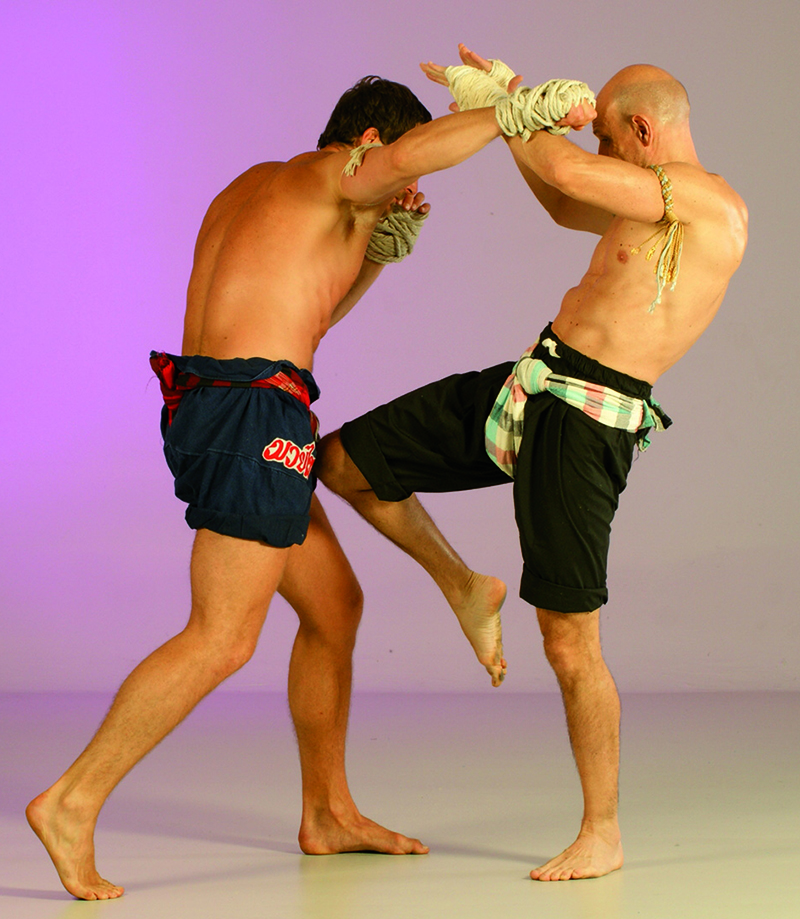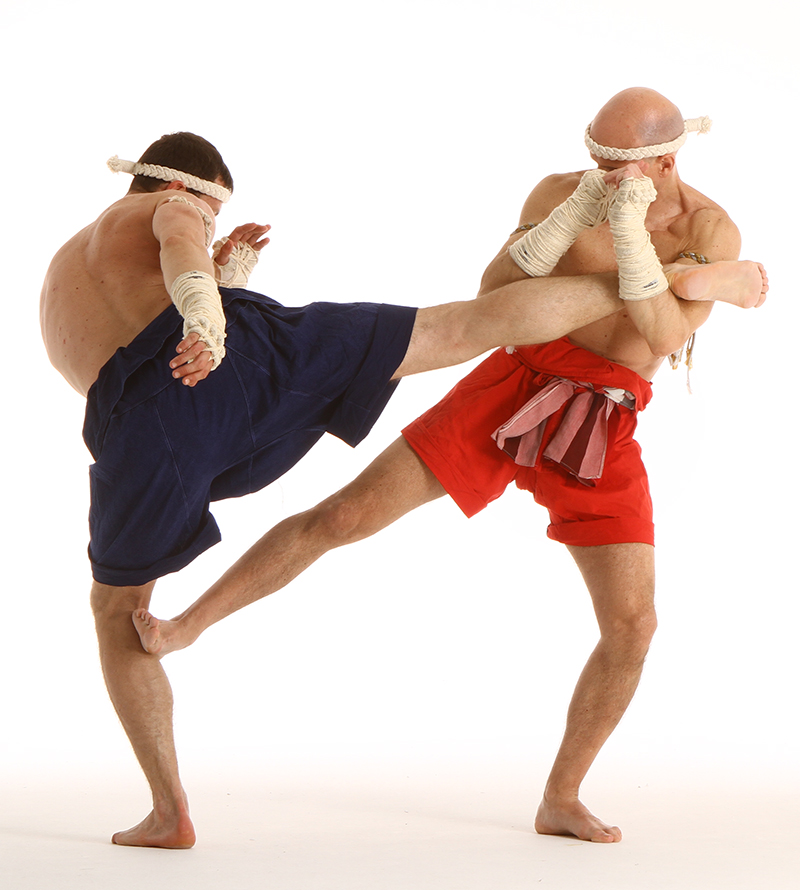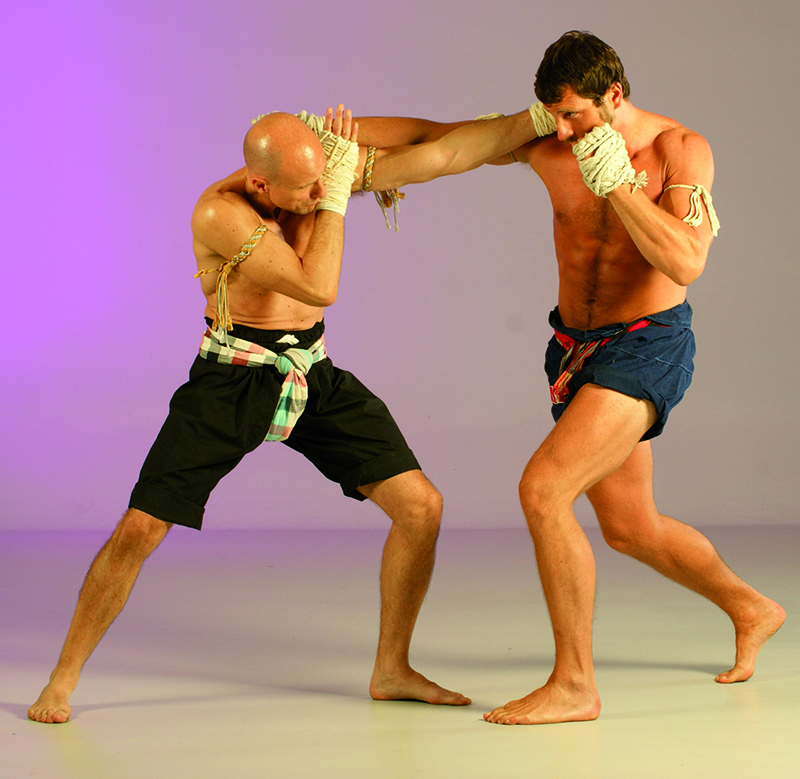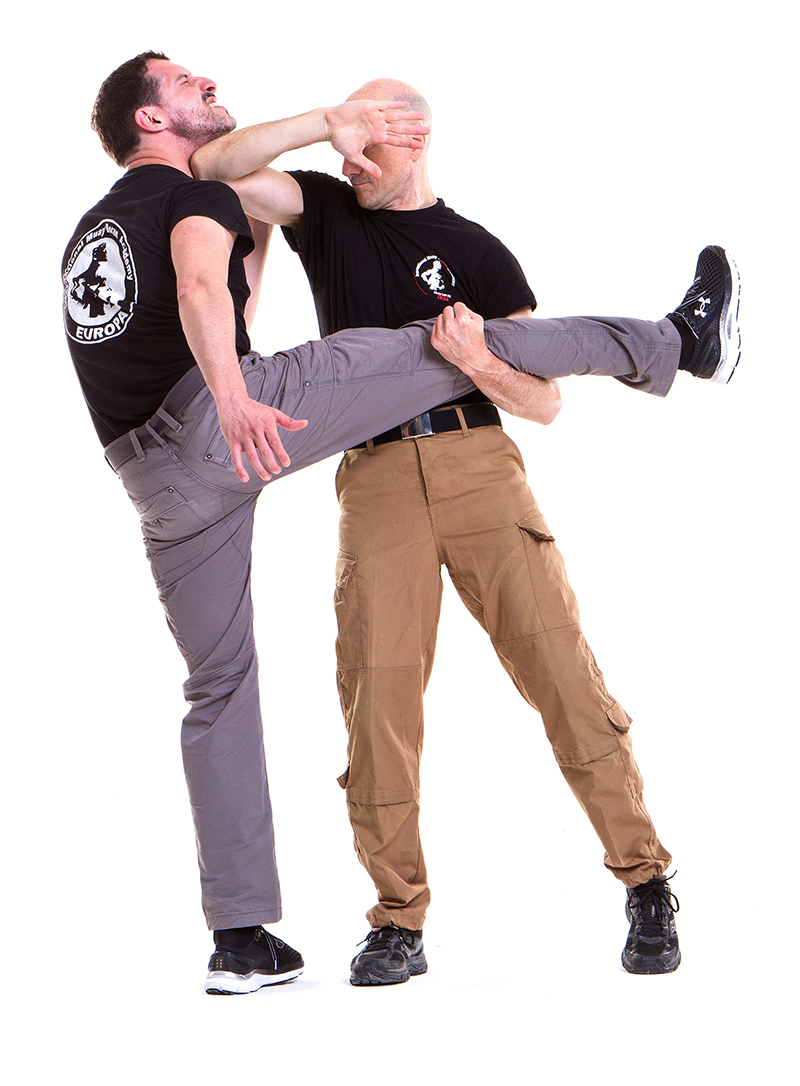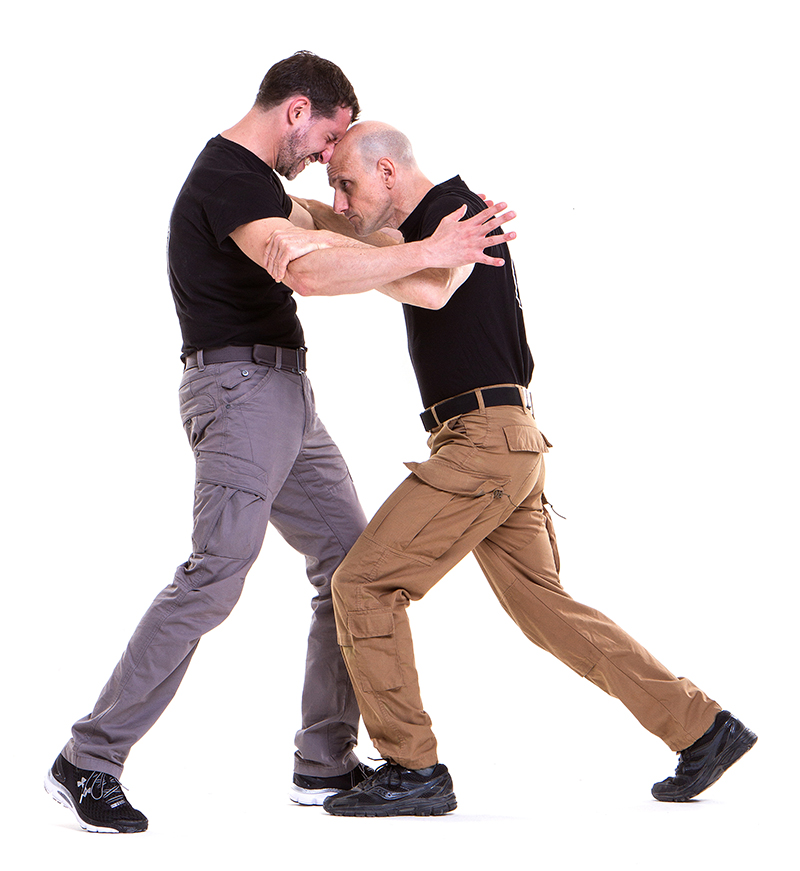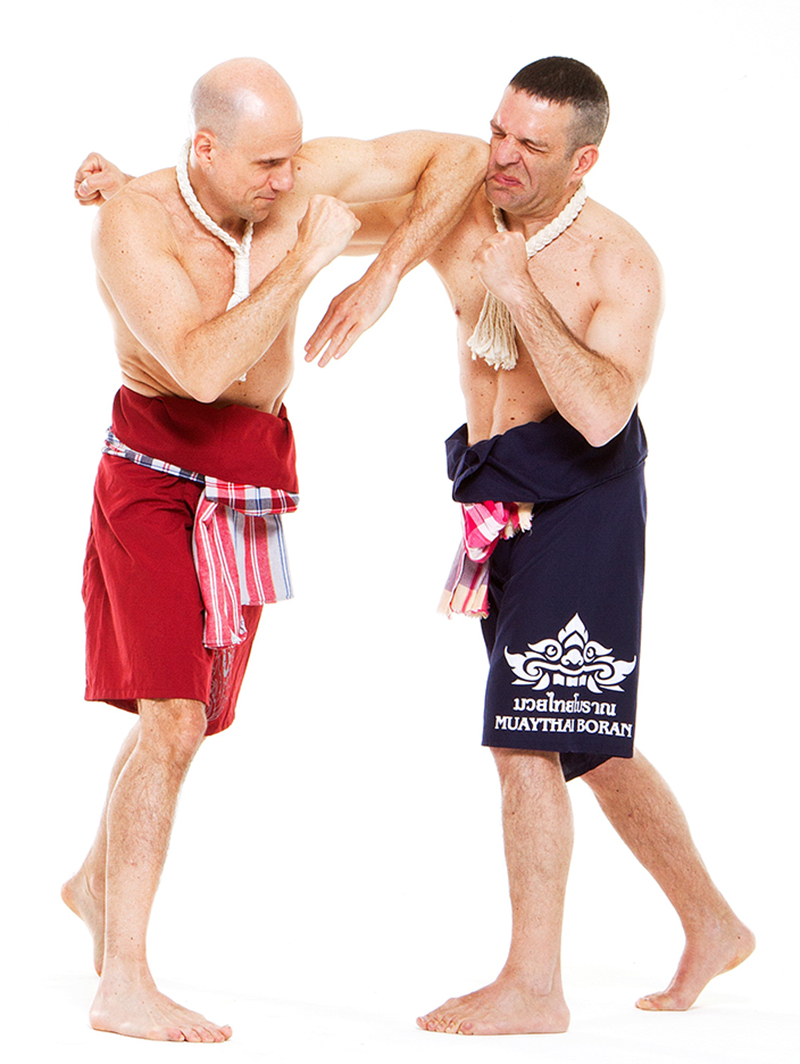
Paksa Waeg Rang: the ancient combat strategy of breaking into the opponent’s centreline
Paksa, ปักษา Waeg, แหวก Rang, รัง means “the bird peeps through or breaks into the nest”. The key word here is Waeg, แหวก that means to break into or to part. When you break into the opponent’s defense or guard, you open the way to a whole lot of devastating offensive options. In fact, the opponent’s “nest” is a metaphor to indicate the weak spots of his anatomy located along an imaginary line that runs from the top of his head to his perineum: this crucial body area is commonly referred to as the center line. Several oriental fighting arts base their offensive and defensive strategies on the center line theory. Most fighters learn early in their career that many weak spots lie on or near the central part of their bodies: learning to attack the central area of the opponent is a sure path to victory. In the same way, protecting one’s sensitive points is vital in order to guarantee safety in a fight. By concentrating one’s defense on covering the center line is a rational attitude that provides safety even in offensive phases.
Every Muay Boran stylist should start his training by following these three steps:
Step 1. Learn to detect the vital points that lay along your center line. This line divides the body vertically in two halves, left side and right side. Many sensitive points are located on or very close to this imaginary vertical line. Some of the most important points for combat are the following:
(1) crown, (2) eyes, (3) bridge of the nose, (4) upper lip, (5) throat, (6) sides of the neck, (7) sternum, (8) heart, (9) solar plexus, (10) bladder, (11) groin.
Attacks to each one of this points are potentially destructive. Head targets are best reached with hand and elbow strikes. Body targets can be attacked with hands, elbows and knees. Kicks and knee strikes are the best option if one chooses to attack lower targets.
Step 2. Develop efficient offensive strategies designed to attack the opponents’ center line. Striking along the center line can cause serious damage and, in case of very accurate attacks, even death. In order to break into the opponent’s guard and reach his center a Muay Boran fighter usually employs straight line attacks: straight kicks, straight punches and straight push elbows. A standard guard position is designed to protect some of the most sensitive spots but, without a side step, a parry or a block, it is impossible to cover all targets at the same time with a single guard. For this reason, learning to attack all soft spots along the center line with different body weapons is a must in order to develop unstoppable offensive tactics.
Step 3. Starting from a good guard position, develop a number of defensive strategies designed to repel possible attacks aimed at your center line and counter attack. Covering one’s center line is crucial in all-out fighting, since a strong attack to one’s “nest” can quickly end the confrontation in every moment. If our center is exposed, a smart opponent will easily reach our vital points; on the contrary, with a solid guard and a good defensive strategy, we will force our adversary to attack less sensitive areas first, in order to lead us to opening our center line for a finishing move. This will create openings along his inner line and will give us enough time to react and take the offensive, aiming our attacks to his possibly unguarded center.
Paksa Weag Rang fighting strategy is designed to learn how to attack the opponents’ center line in the most efficient ways. This battle field tested Mai Muay (combat technique) is based on the development of instinctive reflexes that allow a fighter to break through an adversary’s defences at the same time he is executing his attack or immediately after (this advanced counter-fighting principle has been discussed in previous articles and will not be repeated here). In the application of counter striking, an expert of Paksa Waeg Rang strategy, will always strive to execute simultaneous defense and counter attack maneuvers: if, for example, one arm is deflecting the opponent’s strike, the other arm should be executing a counter blow, at the same time. This way of counter attacking makes any kind of defense the opponent may use, virtually useless; while one arm deflects or blocks, the other arm (or a leg) reaches the unguarded targets with enough power to cause a sudden KO. This is the intrinsic Art of this Mai Muay Boran.
Let us see some examples of possible applications of this ancient combat strategy against some of the most common attacks.
1. Paksa Waeg Rang against round punches (Mahd Wiang). Step forward and simultaneously deflect the punch and strike. As the opponent moves towards you and starts throwing a rear roundhouse punch, waste no time and step forward into the attack. Your mind must be focused on the target of your counterattack, in this case a low straight knee aimed at the groin or bladder. While you step forward and throw your knee blow, use your forearm to block the momentum of the swing punch. Your outer forearm bone should impact against the opponent’s inner forearm: this is a painful blocking technique that will help confuse him making your counter strike virtually impossible to block.
2. Paksa Waeg Rang against swing kicks (Tae Wiang). Step forward and simultaneously block the kick (and if possible catch the leg) and then strike. The roundhouse kick is a very powerful attack that all fighters should learn to neutralize and counter. If you try to sidestep a swing kick, you’ll find that the attacking leg will follow you and hit you anyway. The best defensive option is to apply Paksa Waeg Rang strategy and step forward: your elbows should impact against the opponent’s shin (middle part) and thigh, blocking the kick and possibly hurting the attacking leg. A quick leg grab and a swift counter kick should follow right after. Possible counter kicks are: a low side kick to the knee of the supporting leg or a vertical round kick to the “fork”.
3. Paksa Waeg Rang against straight punches (Mahd Trong). Deflect the punch and simultaneously step forward and strike. Breaking through the opponent’s guard as he is throwing a straight punch is no easy task. Paksa Waeg Rang intrusion strategy is the best option when facing a good straight-hitter. As the attacker steps forward and starts throwing the punch, bend slightly forward and step. While you move forward straighten your lead arm thus creating a “track” that pushes the straight punch away from your body. At the same time the opponent’s center line will be left completely unguarded and open to several possible counterattacks (elbow strikes, knee strikes, head-butts, vertical swing kicks).
4. Paksa Waeg Rang against straight kicks (Tiip Trong). Deflect the kick, step forward and strike. In order to get to the opponent’s “nest” when he attacks with a front kick, the defender must first deflect the attacking leg with a low parry. At the same time he should step forward and under hook the opponent’s leg: by doing so, the defender can easily reach the attacker’s center line, ready to retaliate with strikes or a throw. The counter strikes can go from elbow blows to the face, neck or throat to knee strikes to the groin. Several throwing techniques can also be executed from the leg trap: stepping forward, diagonally or laterally, the already unbalanced opponent can be slammed to the ground with relative ease.
5. Paksa Waeg Rang against single or double neck holds (Chap Ko). Step forward and check the opponent’s arms and strike. The intrusion into the attacker’s guard can also be executed against an attempt to catch the neck with one or two arms. As the attacker steps forward trying to put one or both hands around your neck, go towards him and intercept his arms putting your forearms or wrists in the crook of his elbows. Pulling his arms with a jerk, hit his face with your forehead: follow up immediately with a knee to the groin. The head-butt’s targets are located along his centreline, as well as the groin: nose, eye sockets, chin are weak points that, if struck with enough power, can cause a dramatic KO.


